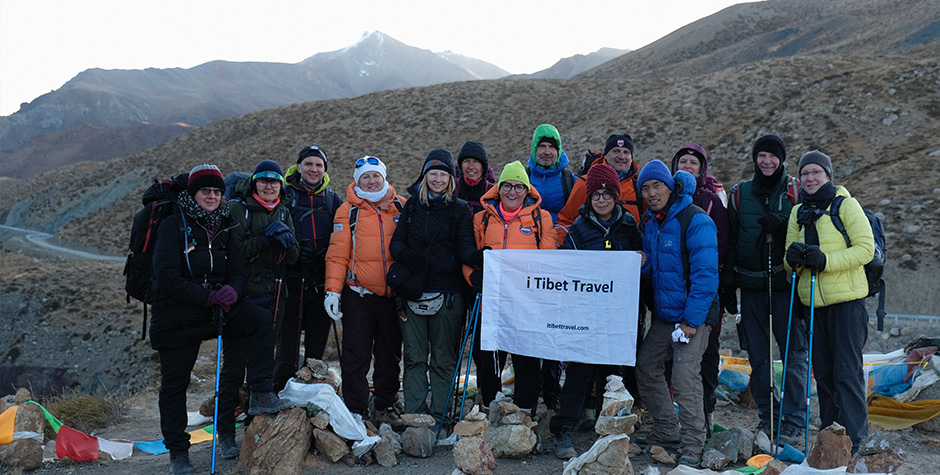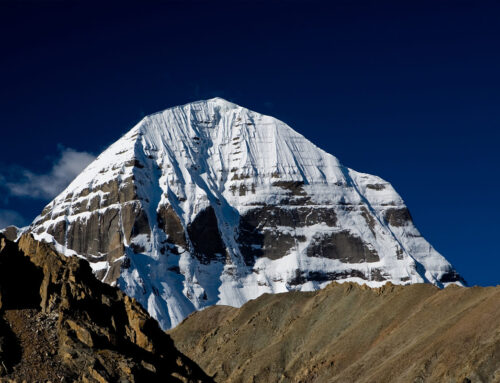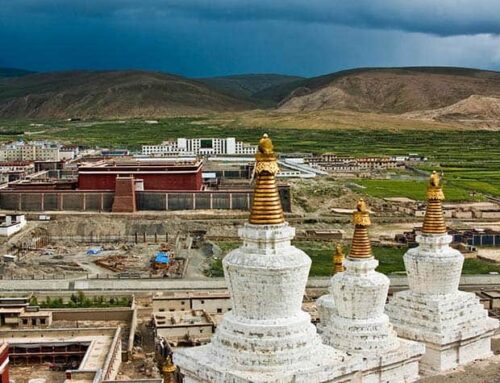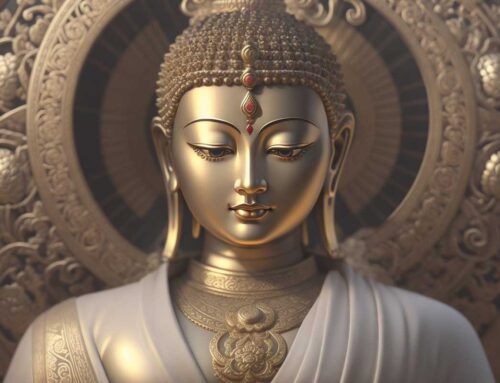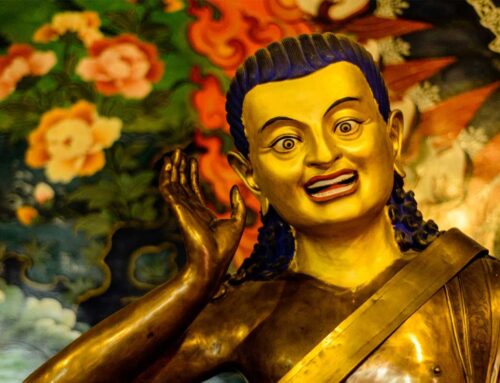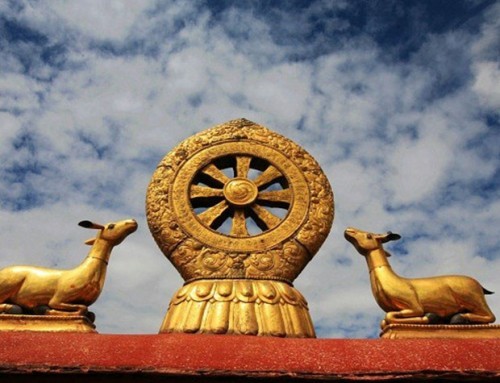In the sacred realms of Tibetan Buddhism, a profound and holistic approach to spiritual and physical well-being unfolds through the ancient practice of Tibetan Yoga. This tradition, deeply rooted in the teachings of Tibetan Buddhism and Bon, has experienced a resurgence in the West, capturing the attention of practitioners seeking a holistic path to enlightenment. In this comprehensive exploration, we delve into the multifaceted dimensions of Tibetan Yoga, shedding light on its historical roots, key principles, and transformative practices.
Historical Roots and Evolution
Tibetan Yoga traces its origins to the mystical landscapes of Tibet, where monastic traditions intertwined with Buddhist philosophies gave rise to a unique blend of spiritual and physical practices. Historically, Western practitioners were drawn more towards teachings that focused on mental development, overshadowing the physical yogas that emerged from Tibetan traditions. However, recent years have witnessed a shift, with a growing interest in practices like trul khor, the magical wheel of movement, and yantra yoga.
Key Principles of Tibetan Yoga
The Three Doors: Body, Speech, and Mind:
Tibetan Yoga centers around the concept of the Three Doors – the physical body, speech or energy, and mind. These serve as gateways through which practitioners navigate their journey toward enlightenment, recognizing the interconnectedness of these aspects.
Tsa Lung Practices:
Integral to Tibetan Yoga are tsa lung practices, emphasizing the subtle channels (tsa) and vital breath (lung or prana). The metaphorical relationship between the wild horse (vital breath) and rider (mind) guides practitioners through channels, fostering a harmonious connection between body and mind.
Trul khor Movements and Yantra Yoga:
Trul khor, or magical wheel movements, play a pivotal role in Tibetan Yoga. These dynamic postures, coupled with synchronized breath and visualization, aim to alter the flow of vital breath, stabilize the mind, and awaken awareness of the natural state of mind. Yantra Yoga, a form of trul khor, introduces practitioners to a series of movements coordinated with breath, contributing to enhanced flexibility and overall well-being.
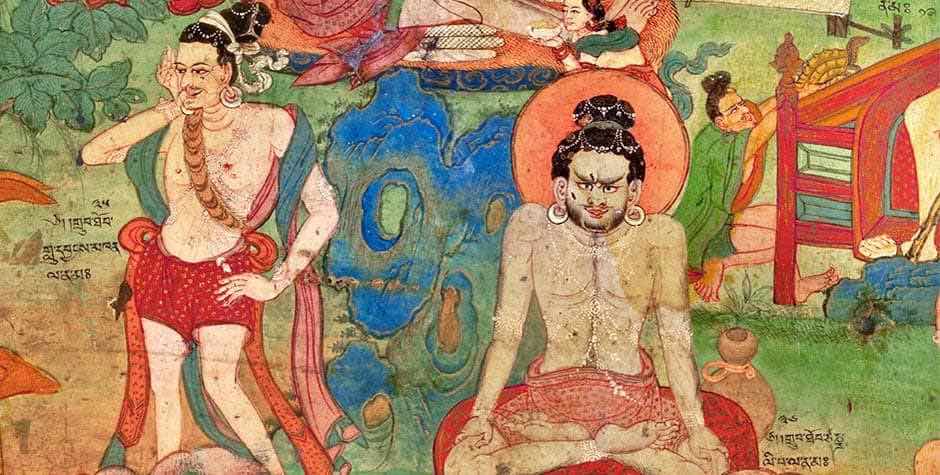
The Resurgence in the West
Recent years have witnessed a growing interest in Tibetan physical yogas in the West. Publications like Yoga Journal have dedicated space to explore various facets of Tibetan Yoga, unveiling the secrets of trul khor and shedding light on the historical paintings of the Dalai Lama’s secret temple in Lhasa. This resurgence marks a departure from the historical bias towards mind-focused teachings, signaling a broader appreciation for the interconnectedness of body, speech, and mind.
The Oral Transmission of Zhang Zhung
Within Tibetan Yoga, the Oral Transmission of Zhang Zhung holds particular significance. This transmission comprises seven cycles, each attributed to different masters of the Zhang Zhung lineage. These cycles, ranging from preliminary to special, are designed not only to stabilize meditative practice and remove obstacles but also to enhance physical health and emotional stability.
Contemporary Applications and Benefits
Tibetan Yoga practices, such as trul khor, have practical applications in promoting health and well-being. By balancing vital energy (rlung) in the body, these practices influence the mind and nervous system, addressing root factors in various diseases. The emphasis on the body-mind connection provides a unique avenue for self-discovery, clarity, and heightened presence.
The Path Forward
As Tibetan Yoga gains traction in the West, practitioners have the opportunity to embark on a transformative journey. The practices, once shrouded in mysticism, are now accessible through training courses and translations of original texts. Whether following the teachings of Namkhai Norbu Rinpoche or Tenzin Wangyal Rinpoche, individuals can explore the rich tapestry of Tibetan Yoga, unlocking its mysteries and experiencing the profound union of body, speech, and mind on the path to enlightenment. In the convergence of ancient wisdom and contemporary exploration, Tibetan Yoga offers a holistic approach to spiritual growth, health, and self-discovery in the modern world.
The Integration of Tibetan Yoga with Meditation
Tibetan Yoga, with its emphasis on the interplay of body, speech, and mind, seamlessly integrates with meditation practices. In the realm of Great Perfection teachings (Dzogchen), where the quality of meditation surpasses quantity, Tibetan Yoga becomes a powerful ally. Rather than adhering to lengthy meditation sessions, practitioners may opt for shorter, focused periods, interspersed with trul khor or yantra yoga practices.
The symbiotic relationship between Tibetan Yoga and meditation serves a crucial purpose in cultivating a clear and fresh state of mind. Rather than succumbing to distractions, dullness, or lethargy during extended meditation sessions, practitioners can infuse their practice with the dynamism and clarity derived from Tibetan Yoga. This approach not only rejuvenates the meditation experience but also aligns with the principles of mindfulness and presence.
Healing and Balancing through Tibetan Yoga
Beyond the spiritual dimensions, Tibetan Yoga practices play a role in promoting physical health and emotional balance. By engaging in movements that manipulate the subtle channels and guide the vital breath, practitioners can address the root factors of diseases. Specific trul khor postures are designed to assist the body during cleansing practices, promoting peristalsis and massaging organs. This holistic approach aligns with the principles of Tibetan Medicine, viewing the mind and nervous system as integral components influencing overall well-being.
Distinctive Elements of Tibetan Yoga Compared to Hatha Yoga
While there are commonalities between Tibetan Yoga and Hatha Yoga, distinctions arise in their practices. Tibetan Yoga, often incorporating vigorous movements, breath control, and visualization of inner channels, serves to break up energetic blocks in the body. The focus on tsa lung practices, subtle channels, and vital breath distinguishes Tibetan Yoga from the more widely known Hatha Yoga.
Both traditions share an emphasis on working with the mind-body relationship through the visualization of channels (nadis) and energy centers (chakras). However, variations exist in the conceptualization of these channels and chakras across different lineages. Rather than viewing these differences as conflicting truths about the body, practitioners can perceive them as diverse methods to explore the intricate relationship between body and mind.
The Essence of Tibetan Yoga: Inner Body Awareness
Central to Tibetan Yoga is the cultivation of inner body awareness—a shift from external perceptions to an internal, visceral, and dynamic understanding of the body. While external perspectives often involve visualizing the body based on societal ideals or comparisons, Tibetan Yoga encourages practitioners to develop a direct, non-conceptual awareness of their internal body.
This shift in awareness transforms the body into a vehicle for heightened presence and self-reflexive awareness. Through somatic practices that direct attention inward, Tibetan Yoga allows practitioners to experience changes in breath, mind states, and overall presence. The subtle body models within Tibetan Yoga provide tools to explore this internal, somatic relationship, offering a direct and non-conceptual pathway to heightened meditation and self-awareness.
Conclusion of Tibetan Yoga
In the Tibetan Yoga, the threads of ancient wisdom and contemporary exploration weave together, offering practitioners a comprehensive approach to spiritual growth, health, and self-discovery. As the resurgence of Tibetan physical yogas continues in the West, individuals are granted access to transformative practices that unlock the mysteries of trul khor, yantra yoga, and the rich oral transmissions of Zhang Zhung.
Tibetan Yoga, with its roots in the sacred landscapes of Tibet, transcends cultural boundaries, inviting all seekers to embark on a journey of profound self-discovery. In the integration of body, speech, and mind, Tibetan Yoga serves as a gateway to enlightenment, providing a holistic path that harmonizes ancient traditions with the evolving landscapes of contemporary spiritual exploration. As practitioners delve into this sacred tradition, they unveil the mysteries of Tibetan Yoga, fostering a deep connection to their inner selves and the timeless wisdom of this ancient practice.
About Tibet Travel & Tours
Tibet Travel & Tours is a local travel agency in Tibet that offers unique and authentic experiences to travelers from all around the world. As a leading tour operator in Tibet, we provide high-quality Tibet Travel services that are tailored to our clients’ needs and preferences.
Our team of experienced and knowledgeable professionals strives to ensure that our clients have a hassle-free and memorable trip in Tibet. We specialize in various types of tours, including cultural tours, trekking and hiking tours, and adventure tours.
Our commitment to providing exceptional service has earned us a reputation as one of the best local travel agencies in Tibet. Contact us today to plan your unforgettable trip to Tibet.
Explore Tibet with a local Tibetan Travel Agency
If you’re looking to explore Tibet, starting your journey with a reputable Tibetan travel agency in Tibet is crucial. Tibet Travel & Tours is a great choice to begin your adventure with their extensive knowledge of the region and commitment to responsible tourism.
Their Tibet tour packages cater to a range of interests and budgets, making it easy to plan a trip that suits your needs. Before embarking on your tibet tour, it’s essential to have the right Tibet travel information and necessary documents, including a Tibet travel permit.
The Tibet Travel Planner provided by i-Tibet travel is an excellent resource to plan your trip, including tips on what to pack, where to stay, and what to see.
For beginners, the “About Tibet” guide provided by i-Tibet travel offers a comprehensive overview of the region’s history, culture, and top attractions. So, start your Tibet travel plan here with i-Tibet travel and discover the magic of Tibet for yourself.

